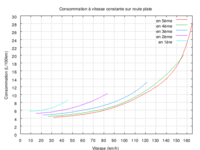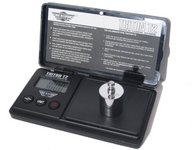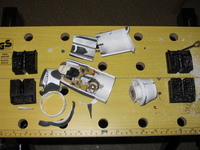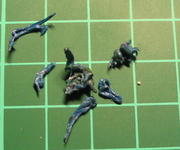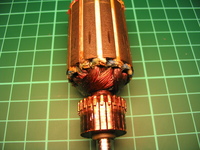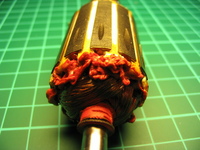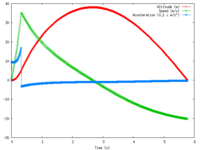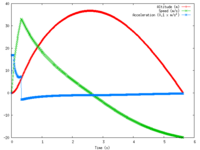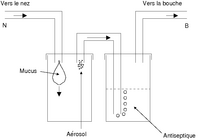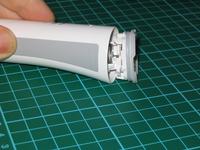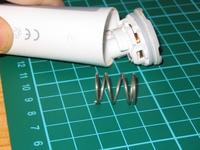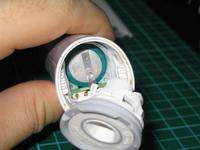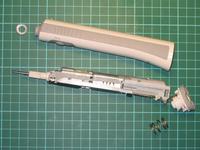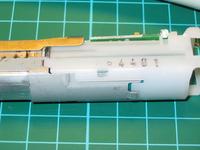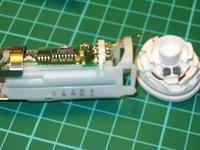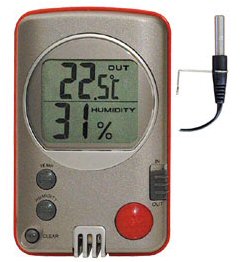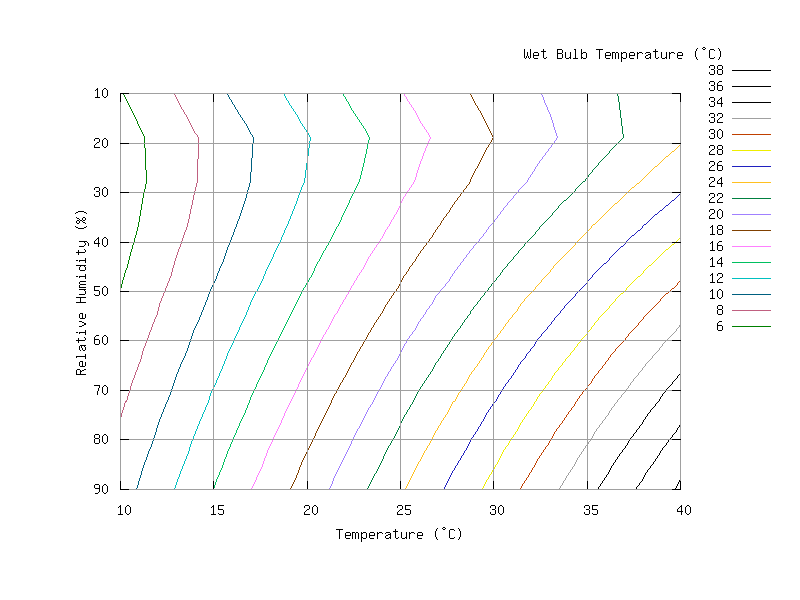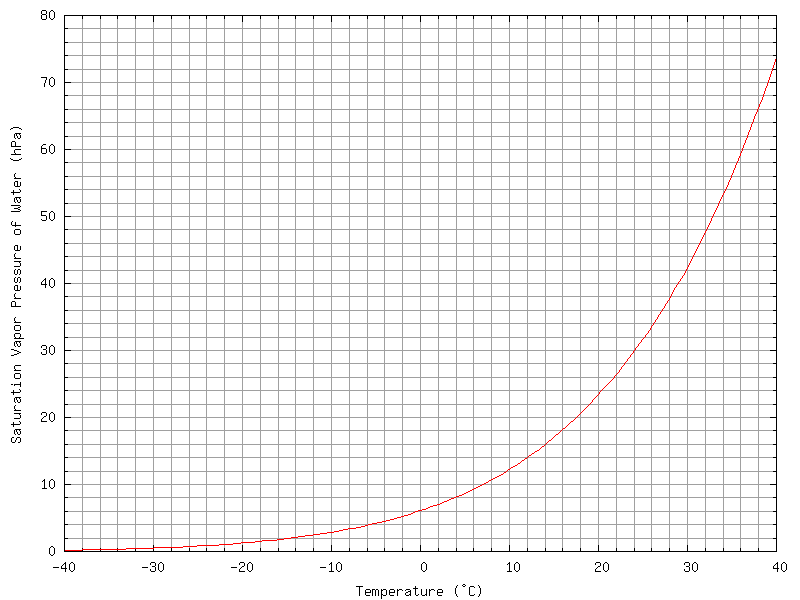
Some months ago, I discovered water rockets while reading Make
magazine's 5th issue. The idea is very simple: take a plastic soda bottle,
fill it partly with water, add pressured air, and release. The practical
difficulties are mainly the release mechanism and the recovery mechanism
(i.e., releasing the parachute not too early and not too late). So two weeks
ago I started to experiment with my brother-in-law, starting with the release
mechanism and a simple bottle, as well as a standalone parachte. This (long)
week-end, we built a full rocket, inclunding a nose holding the parachute and
fins. It was painted red, because the transparent bottle was hard to spot in
the sky, and even harder to find after landing in high grass.
Lauchpad Construction
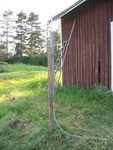
The lauchpad is made of one PVC tube that goes into the rocket, plus one wider
tube around the first one that is part of the release mechanism and holds the
rocket while on the tube. Three screws placed on the grey tube at 120° from
each other hold the white tube in the middle of the grey one.
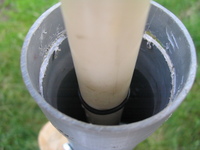
An O-ring is placed on the thinner tube so that the neck of the bottle will go
just around it.
Release mechanism
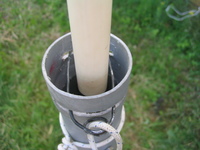
The release mechanism relies on the wide ring just below the bottle's neck.
Once on place on the tube, a metal pin will go around the neck and above the
ring, preventing the bottle from taking off. The closeups will show the ring,
just visible through the slot in the grey tube.
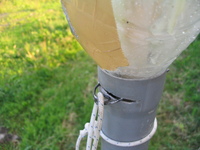
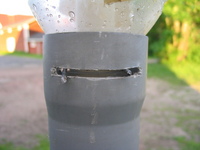
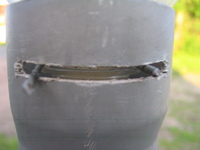
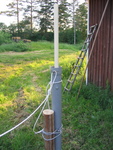
A rope connected to the pin allows to pull it from a safe distance. The rope
is attached to the pole so that the pin doesn't jump to the face of the person
pulling it (it hurts).
Currently, the release mechanism is not very reliable, it gets jammed from
time to time and the rocket doesn't take off vertically. Also, the seal around
the launch tube is not tight enough, there is some amount of leaking.
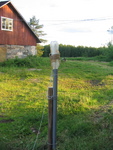
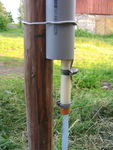
The other end of the thinner tube is connected to the air compressor. Getting
a tight enough connection here was not easy, but after several attempts we
found one combination of rubber hoses and collars that works. More or less. It
sometimes pops off.
Rocket Construction
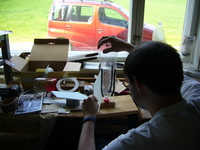
Building the rocket was quite straightforward. One thing to remember: epoxy
will hold the fins onto the rocket quite well, but it will break upon impact
on the ground (understand: crash landing when the parachute doesn't open).
Polyurethane glue (actually some kind of PU filling material) on the other
hand will hold them in place and be flexible enough so that the bond won't
break on impact. The aspect is pretty ugly, but it works. It just needs to dry
overnight. Building a support for the bottle and the fins helps keeping them
in place when drying. It's made of a cork screwed into a piece of wood of the
proper height, and attached to a plank into which slots have beed sawn in
order to hold the fins.
Parachute
The parachute is folded into the nose cone during the flight, and the nose is
supposed to pop off when the rocket reaches its apogee. The problem was that
more often than not, the cone didn't open, and the parachute didn't open at
all. Finding the balance between a nose which is too tight on the rocket and a
nose that falls off with a simple gust of wind before take off is very
difficult. According to this website,
I think the rocket should take off as vertically as possible, and the nose
should hold only because of the force of the acceleration, and fall off as
soon as the rocket is not in stable flight anymore. But the holes in the cone
for decreaseing the pressure inside it is something to try, too.
Flight
This is the last flight of the week end, the only one that was more or less a
success with the red rocket. The video was shot at 30 fps, therefore one frame
below lasts 33 ms. One can see that the nose separates quite early from the
body, probably because of the flight not being straight up.
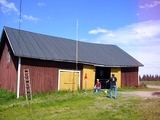
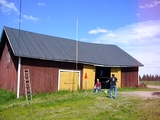
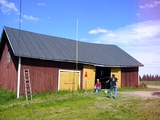
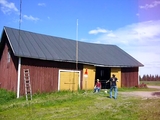
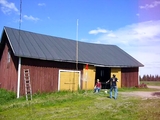
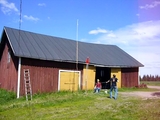
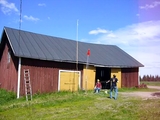
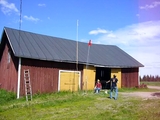
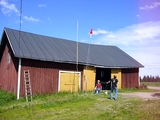
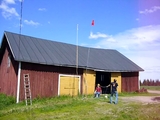
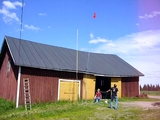
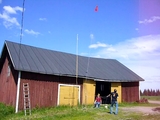
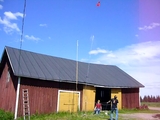
The original video clip is also available.
Bad Landings
These bad landings where quite soft ones, because the parachute did open and
slowed the rocket down.

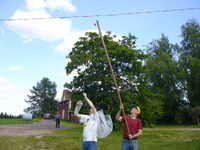
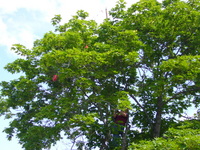
There have been other bad landings where the nose of the rocket didn't fall
off, and where the rocket fell down like a stone straight onto its nose. It's
been bumped in many times, but it was still able to fly afterwards! The test
bottle once crashed and had many bumps and creases, but it was possible to
inflate it again, and the only tiny hole it had could be fixed with duct tape
(blessed be the inventor of duct tape!)
